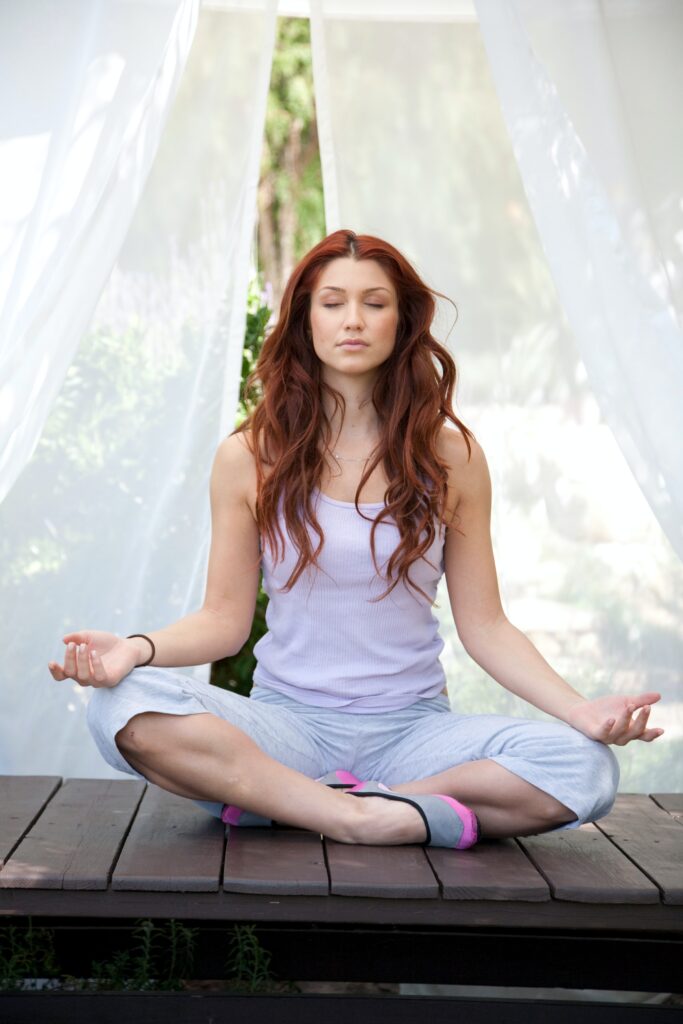Most people don’t think of yoga as a way to purge your body of long-held tension. That’s because perhaps they have never done yoga. If your idea of yoga is that it’s some type of strenuous, stretching exercise that you are not flexible enough for, think again. Yoga heals trauma like no other. Making yoga a part of your daily routine is an easy and effective means of removing chronic stress from the body. In fact, if you let it, yoga can change your life.
Every “body” can do yoga. See what I did there? 🤣
There are endless postures to try, from basic to advanced and everything in between. You can focus your stretching on specific regions of the body, or you can flow through a yoga series with a specific goal, such as weight loss, or muscle building, or in this case trauma release, in mind.
All yoga poses can be modified to your ability and fitness goals. Choose your perfect yoga asana, or series of poses, to meet your need for slow, mindful breathing and relaxed movements versus a more vigorous flow from one pose to the next.
This is one of the most natural and nourishing ways to heal your body from emotional hurt, release trauma and settle the nervous system.
🧘♀️ Why is yoga ideal for emotional healing? 🧘♀️
Yoga helps you re-learn how to position and move the body in perfect alignment. This helps to open the pathways and channels that let life-giving blood and oxygen flow to the organs and extremities.
When people talk about yoga “flow” there is a definite progression of moving from one pose to the next. Once you become familiar with the poses, you may discover (to your delight) that your body wants to naturally move into the next posture in a series. For example, Child’s pose flows naturally into Plank pose, from which you can gently come into Downward Facing Dog and then rise slowly to Chair pose… then sweep your arms overhead to stand again, bringing you into Mountain pose.
Flowing or moving from one yoga pose to the next helps you to settle into the rhythm of gentle movements and synchronize breathing. Yoga breathing comes from the belly, which helps to oxygenate the body’s cells as you gently and mindfully stretch and contract specific muscle groups.
Yoga helps you re-learn how to breathe. Relaxed breathing comes from the belly or diaphragm. Imaging a sleeping baby, her tummy gently rising and falling with each breath. In yoga this is called ujjayi breathing.

If you have been traumatized by violence or abuse, then you are likely a shallow breather. Shallow breathing is a stress response – it’s the nervous system going into fight or flight mode. The body shifts away from focusing on background tasks like healing itself, digesting food and making hormones that increase fertility. Instead, it goes into emergency mode, speeding up breathing, heart rate and raising blood pressure in an attempt to thwart a perceived attacker.
Yoga returns the body to a regulated breathing state that resets the parasympathetic nervous system and returns all systems to a restful and relaxed mode of function. A relaxed nervous system enables us to think more clearly, heal faster, use our food more efficiently, and rest more completely when it’s time to sleep.
Which yoga poses are best for tension and trauma release in the body? The short answer to this is that any yoga you do on a routine basis will help heal your body from the damage caused by stress and trauma.
However, if you are in search of the most relaxed poses that will allow you to focus on breathing and being still without a lot of struggle to hold the poses… try the following:
✔️ Mountain pose
✔️ Prayer pose
✔️ Forward fold
✔️ Downward facing dog
✔️ Plank pose
✔️ Cobra pose
✔️ Upward facing dog pose
✔️ Child’s pose
✔️ Lotus pose
✔️ Side stretches
✔️ Seated forward fold
✔️ Rock pose
✔️ Corpse pose
Some more advanced yoga poses that give a gentle massage to the adrenal glands, kidneys and thyroid which are often affected in those who have experienced traumatic events, include the following:
✔️ Neck rolls
✔️ Seated twists
✔️ Camel pose
✔️ Happy baby pose
✔️ Shoulder stand
✔️ Plough pose
✔️ Bridge pose
✔️ Wheel pose
To learn more about yoga, master the basic poses and learn how to belly breathe, take a look at online resources including books, videos and websites from yoga experts such as FitGirls, Anne Novak and Tara Fraser. You’ll also find some great instructional yoga videos on YouTube.
This post is part of the Emotional Healing series. Printable version available HERE.

